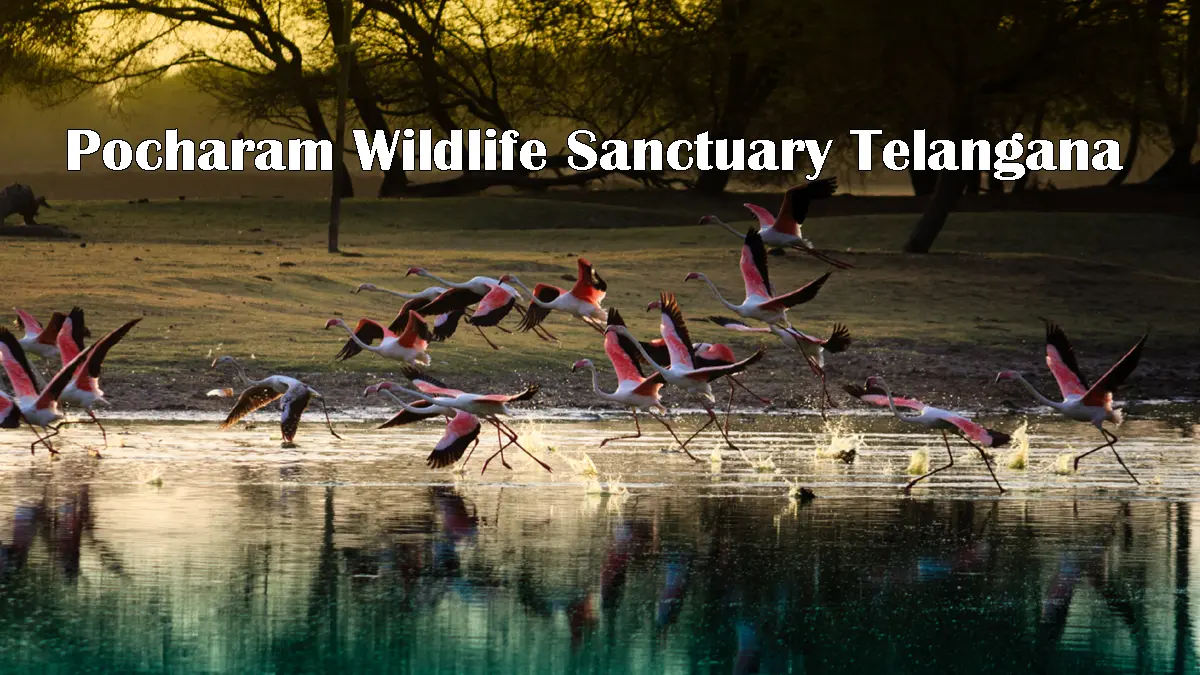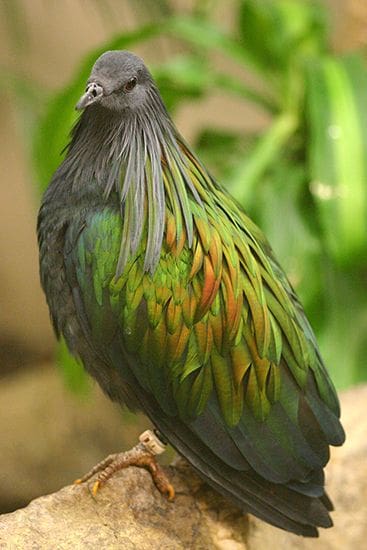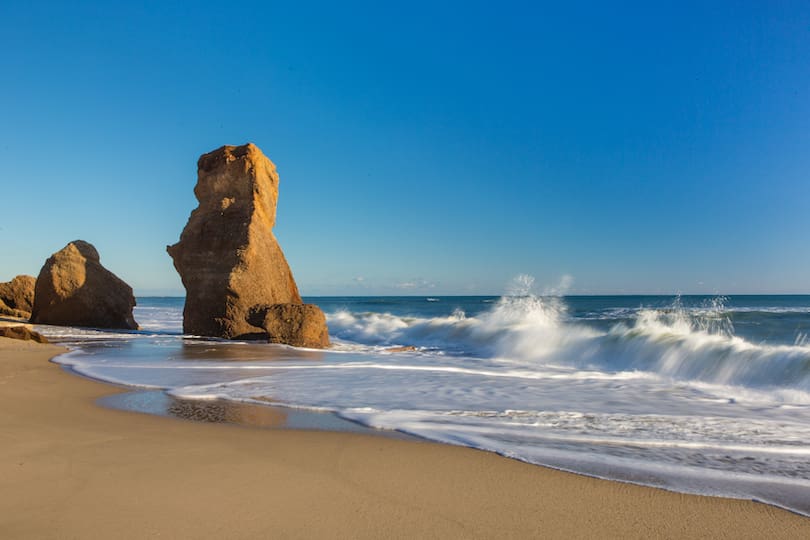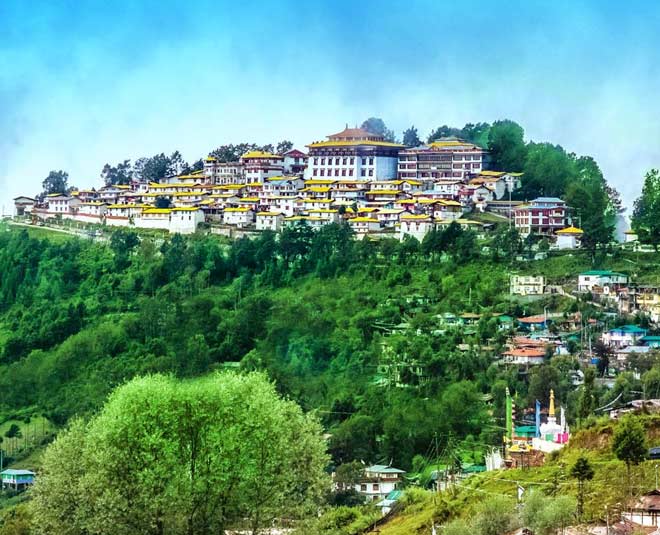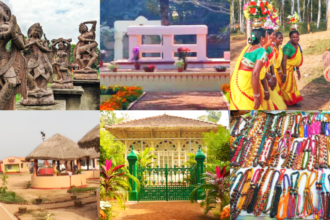Bhalukpong, a serene town nestled in the foothills of the Eastern Himalayas in Arunachal Pradesh, is a hidden gem waiting to be explored. Known for its breathtaking landscapes, rich cultural heritage, and thrilling adventures, Bhalukpong offers an unforgettable experience for travelers seeking solace in nature or excitement in exploration. Whether you’re a nature enthusiast, history buff, or adventure seeker, this quaint destination has something for everyone. In this comprehensive guide, we will take you through the top 5 places to visit in Bhalukpong , ensuring that your journey is as enriching as it is memorable.
1. Sessa Orchid Sanctuary: A Paradise for Nature Lovers
A Haven of Rare Flora
The Sessa Orchid Sanctuary is one of Bhalukpong’s most iconic attractions, renowned for its diverse collection of orchids. Spread across an expansive area, this sanctuary is home to over 200 species of orchids, many of which are rare and endemic to the region. As you step into this floral wonderland, you’ll be greeted by vibrant blooms in every shade imaginable, from delicate whites to fiery reds.
Exploring the Sanctuary
Visitors can embark on guided treks through the sanctuary, where knowledgeable guides share fascinating insights about the orchids and their ecological significance. The trails wind through lush forests, offering glimpses of exotic wildlife such as deer, hornbills, and even the occasional clouded leopard. Don’t forget to bring your camera, as the sanctuary provides ample opportunities for stunning photography.

Why It’s a Must-Visit
For botany enthusiasts and casual visitors alike, the Sessa Orchid Sanctuary is a paradise that showcases the incredible biodiversity of Arunachal Pradesh. Its tranquil ambiance and natural beauty make it a perfect spot for relaxation and introspection.
“The Sessa Orchid Sanctuary is not just a place to admire flowers; it’s a celebration of nature’s artistry.”
Detailed Insights into Sessa Orchid Sanctuary
To truly appreciate the magnificence of the Sessa Orchid Sanctuary, let us delve deeper into what makes it so special. This sanctuary is part of a larger conservation effort aimed at preserving the unique flora of the Eastern Himalayan region. The orchids found here are not only beautiful but also play a crucial role in maintaining the ecological balance of the area.
Ecological Importance
Orchids are known as indicator species, meaning their presence or absence can provide valuable information about the health of an ecosystem. In the case of the Sessa Orchid Sanctuary, the thriving population of orchids indicates a healthy environment with minimal human interference. This is further supported by the presence of other plant species that coexist harmoniously with the orchids, creating a complex web of life.
Guided Tours and Educational Programs
One of the standout features of the Sessa Orchid Sanctuary is its commitment to education. Guided tours are led by experts who have spent years studying the local flora and fauna. These tours are designed to be both informative and engaging, catering to visitors of all ages and backgrounds. For instance, children might enjoy interactive games that teach them about pollination, while adults may prefer detailed discussions on the medicinal properties of certain orchid species.
Photography Opportunities
Photographers will find no shortage of subjects within the sanctuary. From close-up shots of individual blooms to wide-angle landscapes capturing the entire forest canopy, the possibilities are endless. Early morning visits are particularly recommended, as the soft light enhances the colors of the flowers and creates a magical atmosphere.
Visitor Facilities
While the focus of the sanctuary is undoubtedly on nature, visitor facilities are well-maintained to ensure a comfortable experience. There are designated picnic areas where families can relax and enjoy meals amidst the greenery. Restrooms and drinking water stations are conveniently located throughout the park, and there is even a small café serving refreshments made from locally sourced ingredients.
2. Tipi Orchid Centre: Where Science Meets Beauty
A Unique Blend of Research and Tourism
Located near Bhalukpong, the Tipi Orchid Centre is a must-visit for those interested in horticulture and conservation. This center serves as both a research facility and a tourist attraction, dedicated to preserving the region’s orchid species. With state-of-the-art greenhouses and laboratories, it plays a crucial role in studying and protecting these delicate plants.
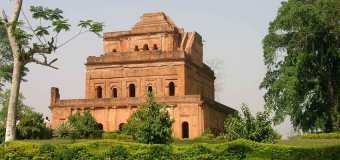
What to Expect
At the Tipi Orchid Centre, you can explore various sections showcasing different types of orchids, including hybrids created through scientific breeding programs. Interactive exhibits provide information about the life cycle of orchids and their importance in maintaining ecological balance. Visitors can also purchase potted orchids as souvenirs, making this stop both educational and rewarding.
Why It Stands Out
The Tipi Orchid Centre stands out for its commitment to sustainable tourism and environmental preservation. By visiting this center, you contribute to the ongoing efforts to protect Arunachal Pradesh’s unique flora.
Detailed Insights into Tipi Orchid Centre
The Tipi Orchid Centre is more than just a tourist attraction; it is a hub of scientific innovation and community engagement. Let’s explore some of the key aspects that make this center so remarkable.
Research Initiatives
Behind the scenes, researchers at the Tipi Orchid Centre are conducting groundbreaking studies on orchid genetics, propagation techniques, and disease resistance. Their work has led to the development of new hybrid varieties that combine the best traits of multiple species. Some of these hybrids are now being used in commercial nurseries, helping to reduce pressure on wild populations.
Community Involvement
The center actively involves local communities in its conservation efforts. Workshops and training sessions are regularly held to teach residents about sustainable harvesting practices and the economic benefits of eco-tourism. This collaborative approach ensures that the benefits of conservation extend beyond the confines of the center itself.
Visitor Experience
For tourists, the Tipi Orchid Centre offers a range of activities designed to enhance understanding and appreciation of orchids. Self-guided tours allow visitors to move at their own pace, while scheduled presentations provide deeper insights into specific topics. Special events, such as orchid festivals and workshops, are organized periodically to engage the public and raise awareness about conservation issues.
Shopping and Souvenirs
No visit to the Tipi Orchid Centre would be complete without browsing the gift shop. Here, you’ll find a variety of orchid-related products, from potted plants and cuttings to books and artwork. Purchasing items from the shop directly supports the center’s operations and helps fund future projects.
3. Bhalukpong Fort: A Glimpse Into History
Unveiling the Past
Perched atop a hill overlooking the Kameng River, Bhalukpong Fort is a historical landmark steeped in legends and lore. Built during the Ahom dynasty, this fort served as a strategic defense post against invasions. Today, it stands as a testament to the region’s rich cultural heritage.

Exploring the Ruins
While much of the fort lies in ruins, its weathered walls and ancient structures evoke a sense of nostalgia. Guided tours offer insights into the fort’s architectural design and its role in shaping local history. From the top of the fort, you can enjoy panoramic views of the surrounding valleys and rivers, adding a touch of grandeur to your visit.
Cultural Significance
Beyond its historical value, Bhalukpong Fort holds immense cultural significance for the local communities. Annual festivals and events often take place here, celebrating the traditions and customs of the indigenous tribes.
“Walking through the ruins of Bhalukpong Fort feels like stepping back in time, connecting us with the stories of our ancestors.”
Detailed Insights into Bhalukpong Fort
To fully grasp the importance of Bhalukpong Fort, it is essential to understand its historical context and the role it played in shaping the region’s destiny.
Historical Context
The fort was constructed during the reign of the Ahom dynasty, which ruled Assam for nearly six centuries. During this period, the Ahoms faced numerous threats from neighboring kingdoms and invading forces. Bhalukpong Fort served as a critical stronghold, providing a vantage point for monitoring enemy movements and launching counterattacks.
Architectural Features
Although much of the original structure has deteriorated over time, remnants of the fort still reveal intricate details about its construction. Stone carvings, defensive walls, and watchtowers bear witness to the ingenuity of ancient builders. Archaeologists continue to study these features to gain a better understanding of medieval architecture in the region.
Local Legends
Numerous legends surround Bhalukpong Fort, adding to its mystique. One popular tale speaks of a brave warrior who single-handedly defended the fort against a massive army. Another story tells of a hidden treasure buried somewhere within the ruins, waiting to be discovered. While these tales may be fictional, they reflect the deep connection between the fort and the local culture.
Modern-Day Relevance
Today, Bhalukpong Fort serves as a venue for cultural events and gatherings. Traditional dances, music performances, and craft fairs are frequently held here, attracting visitors from far and wide. These events not only preserve the region’s intangible heritage but also promote cross-cultural exchange and mutual understanding.
4. Pakhui Tiger Reserve: An Adventure in the Wild
A Wildlife Enthusiast’s Dream
For those seeking an adrenaline rush, the Pakhui Tiger Reserve is a dream come true. This protected area spans over 862 square kilometers and is part of the larger Pakke-Kessang district. It is home to a wide variety of wildlife, including tigers, elephants, leopards, and numerous bird species.
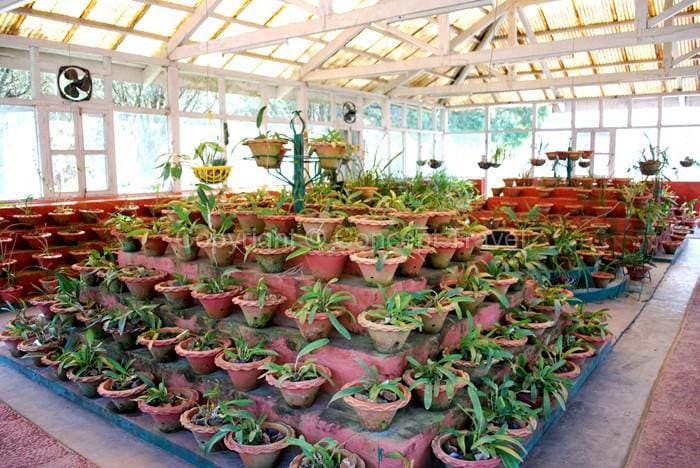
Jungle Safaris and Birdwatching
One of the highlights of visiting Pakhui Tiger Reserve is the jungle safari, where trained naturalists accompany you on thrilling expeditions deep into the forest. Early morning safaris increase your chances of spotting elusive animals like tigers and clouded leopards. For birdwatchers, the reserve boasts over 300 avian species, making it a paradise for ornithology enthusiasts.
Conservation Efforts
The reserve plays a vital role in conserving endangered species and maintaining the ecological balance of the region. By supporting eco-friendly tourism initiatives, visitors help fund critical conservation projects.
Detailed Insights into Pakhui Tiger Reserve
The Pakhui Tiger Reserve is a shining example of successful conservation efforts and responsible tourism. Let’s examine some of the factors that contribute to its success.
Biodiversity Hotspot
Pakhui Tiger Reserve is classified as a biodiversity hotspot due to its high concentration of endemic species. Apart from tigers, the reserve is home to several other charismatic megafauna, such as Indian bison (gaur), sambar deer, and wild boar. Smaller mammals like civets, porcupines, and pangolins add to the diversity of the ecosystem.
Tiger Conservation
As the name suggests, the primary focus of the reserve is tiger conservation. Rangers and scientists employ advanced tracking technologies to monitor tiger populations and prevent poaching. Regular surveys help assess the effectiveness of conservation strategies and identify areas requiring additional attention.
Birdwatching Paradise
With over 300 bird species documented, Pakhui Tiger Reserve is a haven for birdwatchers. Highlights include the great hornbill, wreathed hornbill, and Bengal florican. Seasonal migrations bring additional species, creating a dynamic and ever-changing avifauna.
Visitor Guidelines
To minimize human impact on the reserve, strict guidelines are enforced. Visitors are required to follow designated trails, maintain a safe distance from wildlife, and refrain from littering. Education campaigns aim to instill a sense of responsibility among tourists, encouraging them to become stewards of the environment.
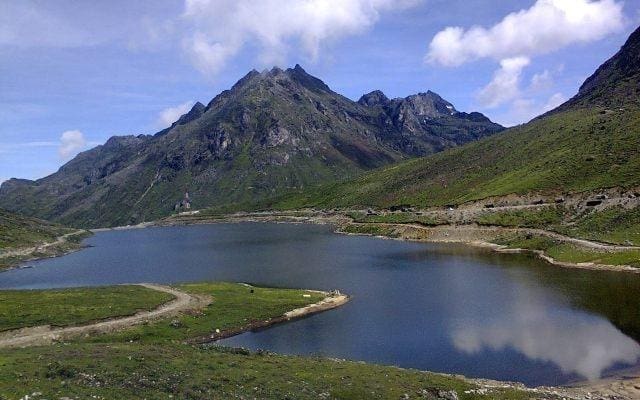
5. Kameng River: Nature’s Playground
A Scenic Escape
Flowing gracefully through the heart of Bhalukpong, the Kameng River is a lifeline for the region. Its crystal-clear waters and picturesque banks create a serene atmosphere ideal for unwinding after a day of exploration.
Activities Along the River
Adventure seekers can indulge in activities such as river rafting, fishing, and camping along the riverbanks. The gentle rapids make it suitable for beginners, while experienced rafters can opt for more challenging routes. Alternatively, simply sitting by the river and soaking in the tranquility is equally rewarding.
Spiritual Significance
The Kameng River holds spiritual significance for the local tribes, who believe it to be sacred. Rituals and ceremonies are performed along its banks, adding a mystical charm to its already enchanting presence.
Detailed Insights into Kameng River
The Kameng River is more than just a geographical feature; it is a lifeline that sustains the people and ecosystems of Bhalukpong. Let’s explore some of the ways in which the river impacts daily life and shapes the identity of the region.
Ecosystem Services
The Kameng River provides essential ecosystem services, including water purification, flood control, and habitat creation. Aquatic plants and microorganisms filter pollutants from the water, ensuring clean drinking supplies for nearby villages. Floodplains act as natural buffers, absorbing excess rainfall and preventing downstream flooding.
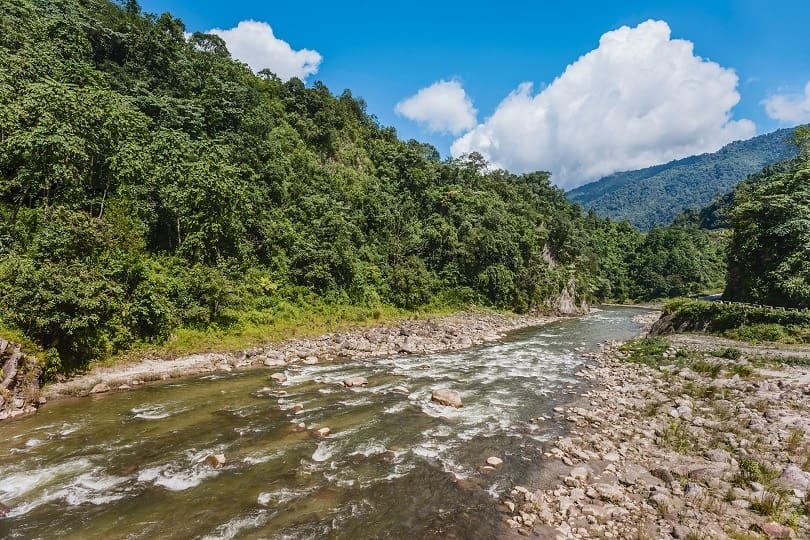
Recreational Activities
For outdoor enthusiasts, the Kameng River offers a plethora of recreational opportunities. Kayaking and canoeing are popular choices for those looking to navigate the calm stretches of the river. Anglers can try their luck catching mahseer, a prized game fish known for its fighting spirit. Campsites along the riverbank provide a rustic yet comfortable setting for overnight stays.
Cultural Traditions
The Kameng River plays a central role in the cultural traditions of the local tribes. Sacred groves and shrines dot the landscape, serving as reminders of the river’s spiritual importance. Festivals like Boori Boot Yullo celebrate the harmony between humans and nature, reinforcing the bond between the community and the river.
Environmental Challenges
Despite its beauty and utility, the Kameng River faces several environmental challenges. Deforestation, illegal sand mining, and industrial pollution threaten the river’s health and sustainability. Community-led initiatives and government regulations are working to address these issues, but continued vigilance is necessary to protect this invaluable resource.
Other Notable Attractions Near Bhalukpong
While the above five destinations are the crown jewels of Bhalukpong, there are several other attractions worth exploring:
Tawang Monastery
Though located further away, the Tawang Monastery is a spiritual haven that draws pilgrims and tourists alike. As one of the largest monasteries in India, it exudes an aura of peace and devotion.
Nameri National Park
Another nearby gem, Nameri National Park , offers excellent opportunities for trekking, elephant safaris, and wildlife spotting. Its lush forests and diverse ecosystems make it a favorite among nature lovers.
Tips for Travelers Visiting Bhalukpong
To ensure a smooth and enjoyable trip, keep the following tips in mind:
- Best Time to Visit : The months between October and April are ideal due to pleasant weather conditions.
- Permits : Obtain Inner Line Permits (ILP) before entering Arunachal Pradesh, as they are mandatory for all non-resident Indians.
- Local Cuisine : Try traditional dishes like thukpa, momos, and bamboo shoot curries for an authentic culinary experience.
- Respect Local Customs : Dress modestly and seek permission before photographing locals or religious sites.
Conclusion
Bhalukpong is more than just a destination; it’s an invitation to immerse yourself in the wonders of nature, culture, and adventure. From the vibrant hues of the Sessa Orchid Sanctuary to the untamed wilderness of the Pakhui Tiger Reserve , each location offers a unique perspective on what makes this region so special. By prioritizing sustainable tourism and respecting local traditions, we can ensure that future generations continue to cherish these treasures.
“In Bhalukpong, every corner tells a story, and every moment becomes a cherished memory.”
Frequently Asked Questions (FAQs)
- What is the best time to visit Bhalukpong?
- The best time to visit is between October and April when the weather is mild and pleasant.
- Do I need permits to enter Bhalukpong?
- Yes, all non-resident Indians require an Inner Line Permit (ILP).
- How do I reach Bhalukpong?
- Bhalukpong is accessible via road from Tezpur (Assam), which is well-connected by train and air.
- Are there accommodation options available?
- Yes, there are hotels, guesthouses, and homestays catering to different budgets.
- What activities can I enjoy in Bhalukpong?
- Popular activities include trekking, river rafting, birdwatching, and exploring historical landmarks.
- Is Bhalukpong safe for solo travelers?
- Yes, Bhalukpong is generally safe, but it’s advisable to stay informed about local guidelines.
- Can I visit Tawang Monastery from Bhalukpong?
- Yes, though it requires additional travel arrangements.
- What should I pack for my trip?
- Pack comfortable clothing, sturdy shoes, sunscreen, insect repellent, and a camera.
- Are there medical facilities available?
- Basic healthcare services are available, but it’s recommended to carry a first aid kit.
- What makes Bhalukpong unique compared to other destinations?
- Its combination of natural beauty, cultural richness, and adventure opportunities sets it apart.

